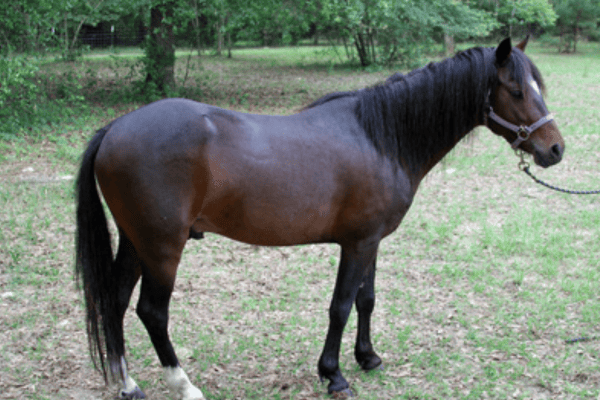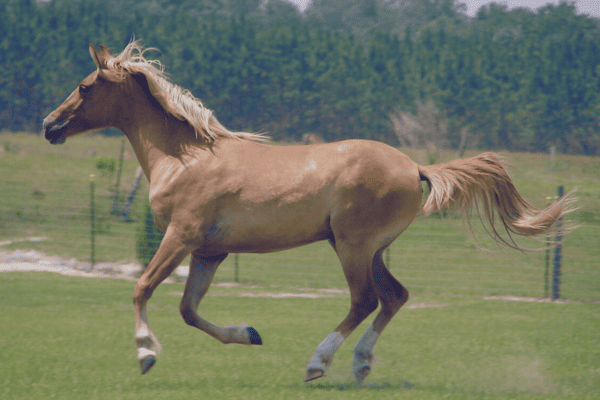The Galiceno horse, a breed of distinguished heritage, was developed in Mexico, its ancestry rooted in the horses brought over by Hernán Cortés from Spain. Characterized by their smaller stature, these horses defy the typical pony classification, earning recognition as a distinct horse breed noted for their solid-colored coats.
The breed’s journey to the United States marked a pivotal moment in its history, culminating in the formation of a breed-specific registry in 1959. Additionally, the Galiceno’s unique lineage is celebrated through its inclusion in the American Indian Horse Registry, highlighting its significance in the broader narrative of North American equine breeds.
History:
The Galiceno horse, with its rich and varied past, stands as a testament to Spanish exploration in America. Its development demonstrates endurance and adaptability while cementing an indelible connection between horse and human. Below is an exploration of this rich story with noteworthy milestones and fascinating details:
Origins in Spain: The Galiceno can trace its ancestry back to early 16th century horses brought over by Hernan Cortes from Spain; these horses included Portuguese Garranos and Galician Ponies from Galicia.
Integration of Sorraia Bloodlines: Records indicate that at some point during its history, Sorraia blood may have been added into its genetic make-up – creating additional layers in its genetic makeup.
Initial Arrival in Mexico: The journey for this breed in North America started with Cortes’ invasion of Mexico in 1519 and his initial group of sixteen horses that served in mines and transport.
Expanding in the 16th Century: Conquistadors used the 16th century to bring horses into what is now Mexico, many with small-framed, smooth gaits horses which would later come to be known as Galiceno horses.
Feral Herd Formation: Over time, many imported horses escaped or were released, becoming feral herds that roamed freely across Mexico’s landscape and played an essential role in natural selection processes that ultimately gave rise to Galiceno traits.
Domestication and Utility: Over time, locals began domesticating these feral horses into Galiceno type horses which became highly valued coastal regions due to their versatility; used as silver mine horses and pack horses they also contributed greatly towards expanding Spanish missions northwards.
Contributing to North American Equine Breeds: The Galiceno’s journey was marked by battles and thefts; during which their lineage integrated into Mustang herds of the American West and helped form an integral part of its culture. They ultimately contributed to creating the American Indian Horse.
Introduction into the United States: Mexican horses were officially brought into the U.S. for breeding purposes in 1958 with a herd of 135 individuals – some previously feral Mexican horses that had migrated north from Mexico.
Establishment of Galiceño Horse Breeders Association: Established in 1959 to protect and advance this breed of horse, the Galiceno Horse Breeders Association registered over 7,000 Galiceno horses across North America as of 2005.
Registration With American Indian Horse Registry: Recognizing its historical importance, many Galicenos are also registered with the American Indian Horse Registry – an organization dedicated to maintaining Native American breed horse lines bred from these Galicenos.
Genetic Research and Affiliations: DNA tests conducted on Galiceno horses living in the US, including some originally imported from Mexico, revealed genetic markers indicative of other Spanish horse populations. Research at Texas A&M University indicates a close genetic link with Garrano horses of Portugal and Spain.
Conservation Status: Recognizing their rarity and significance, The Livestock Conservancy included Galiceno as “Critical” on their Conservation Priority List in 2015. Current U.S. population estimates range between 200-300 with only limited breeding stock remaining active.
Characteristics:
The Galiceno stands out in the horse world with its distinct features and compact stature, making him an exceptional horse breed. Here we explore its distinctive features; both formal and unique perspectives will be explored simultaneously:
Physical Dimensions: Galiceno horses typically reach heights between 12-13 hands (48 to 54 inches; 122-137 cm), making for a smaller yet strong frame. Their weight typically falls within the range of 620-750 pounds (280-342 kg) offering both agility and strength in equal measures.
Coat and Coloration: Galiceno dogs typically feature coat colors such as bay, black or chestnut; breed standards in the United States usually adhere strictly to these colors to ensure consistent and pure representation of this breed.
Head and Neck Features: The breed’s head is distinguished by its proportional balance and distinct straight profile, exuding an air of royal poise. Meanwhile, its muscular yet succinct neck supports this head with strength and elegance.
Body Conformation: The Galiceno stands out with its narrow yet deep chest, straight shoulders and prominent withers; all features that contribute to its aesthetic appeal as well as physical capabilities.
Back and Limbs: The Galiceno’s back is distinctively short, tapering into an elegantly sloping croup. Additionally, their legs boast the ideal combination of length and strength with compact but strong hooves suitable for various terrains.
Gait and Endurance: Distinguished for its swift ground-covering running-walk gait, the Galiceno provides a smooth yet enduring ride – essential qualities in environments requiring prolonged exertion or in which prolonged exertion must take place.
Versatile Utility: In Mexico, the Galiceno pony excels as both a riding and pack pony for lighter draft and farm tasks, and as an equestrian mount in general. Meanwhile in the U.S. it has become popular among young riders due to its jumping ability and suitability for competitive events like cutting and reining.
Historical and Cultural Significance: Deriving their name from Spain’s Galicia region, this breed not only honors its historical roots but also celebrates their Spanish ancestry through culture.

Temperaments:
Galicenos are beloved horses renowned for their exceptional temperaments. Intelligent, willing, and sensitive towards their handlers, Galicenos make excellent horses for riders of all ages and experience levels – including therapeutic riding programs where their gentle presence provides comfort and confidence to those with special needs.
Today Status:
Galiceno Horses remain relatively rare with dedicated breeders and enthusiasts working to maintain their unique heritage. Such efforts are critical not only to ensuring genetic diversity among horse breeds but also in maintaining living pieces of history such as Galiceno’s unique tale woven through human exploration and adaptation – testament to an unbreakable link between people and horses.
the Galiceno Horse represents adventure, resilience and persistence. Their historical value combined with physical and temperamental characteristics makes them an acclaimed breed in equine culture; efforts to preserve their lineage serve as a reminder of our lasting connection to these remarkable creatures.

